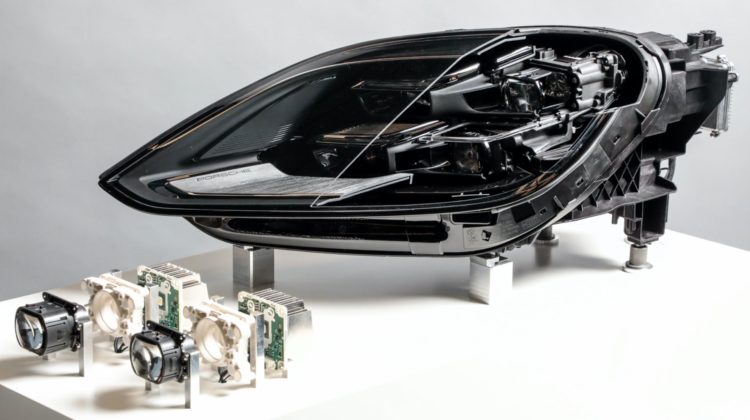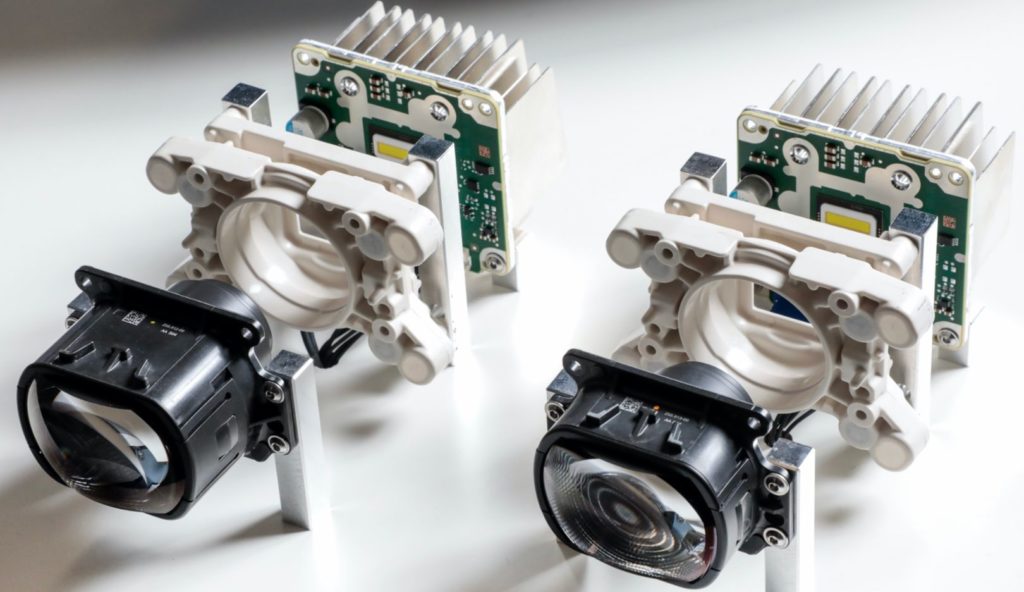
Engineers at Porsche have developed a powerful new lighting technology based on a chip on which more than 16,000 individually controllable micro-LEDs are packed into an area the size of a thumbnail. Two of the chips will be placed in each vehicle headlight.
According to the company, drivers will benefit from the highly flexible light that the new development makes possible thanks to its extremely homogeneous, powerful illumination, which it says can turn night into day at a distance of up to 600 metres.The new technology also makes possible innovative functions such as lane illumination, construction and narrow-lane light and adaptive motorway high-beam lights.A new non-dazzling high-beam function makes large areas to the right and left of the anti-dazzling gap significantly brighter. And because the HD matrix headlights only activate the pixels that are actually needed at any given moment, they consume considerably less energy that other high-resolution systems for the same amount of light.
In addition to four-point daytime driving lights and static cornering lights, the new Porsche headlight includes two of the new HD matrix modules and two bi-functional modules for courtesy lighting and the auxiliary high beam. These four main light sources are arranged in the four-point design that’s characteristic of the brand. The previous top headlight from Porsche, features four courtesy modules and a central Matrix module that uses 84-pixel technology.
The new HD matrix headlights will be introduced successively in different model lines with identical module technology but adapted designs.During the development process, Porsche submitted more than 25 patent applications for the innovative technology. Pre-design simulations were used to analyse which overall system design would best meet all of requirements, leading Porsche to opt for the set-up with 16,384 pixels per module rather than the maximum resolution that is technically feasible.
The new headlight design features four almost squarely arranged light modules, each of which is complemented by a narrow daytime running light strip above the module. The two upper bi-functional modules are identical and provide the courtesy lighting and auxiliary high beam with three LEDs each.

The two lower light units feature an identical LED array with integrated LED driver (ASIC) that generates an unprecedented high-resolution luminous flux in an area of just 12.8 millimetres by 3.2 millimetres. The system controller – comparable to a powerful graphics card – not only activates but also controls the brightness of each of the 16,384 individual light-emitting diodes per LED array in 1,024 steps. Different lenses, each with specifically ground optical glass, complete the two HD modules.
The lenses produce different illumination angles. The wide-angle lens of the outer HD matrix module covers an angle of 40° of width by 10° of height. The inner ‘Performance’ HD matrix module with telephoto lens radiates the light at 20° by 5°. Its illumination is hence only half as high and half as wide, but is significantly brighter. The light distributed by the two HD modules overlaps in the centre, thus combining wide illumination with high intensity in the central area. The HD matrix light illuminates the entire 40° horizontal and 10° vertical range with a luminous flux of more than 1,400 lumens, thereby generating one of the largest and brightest high-resolution illumination areas around. It covers the entire high beam range and begins just in front of the vehicle. The light can be distributed in any way within this area. According to Porsche, this flexibility makes it possible to improve existing functions and introduce new ones – always with the aim of offering the driver the best possible visibility in any situation.


